Google calls on US to shake-up self-driving car laws
- Published
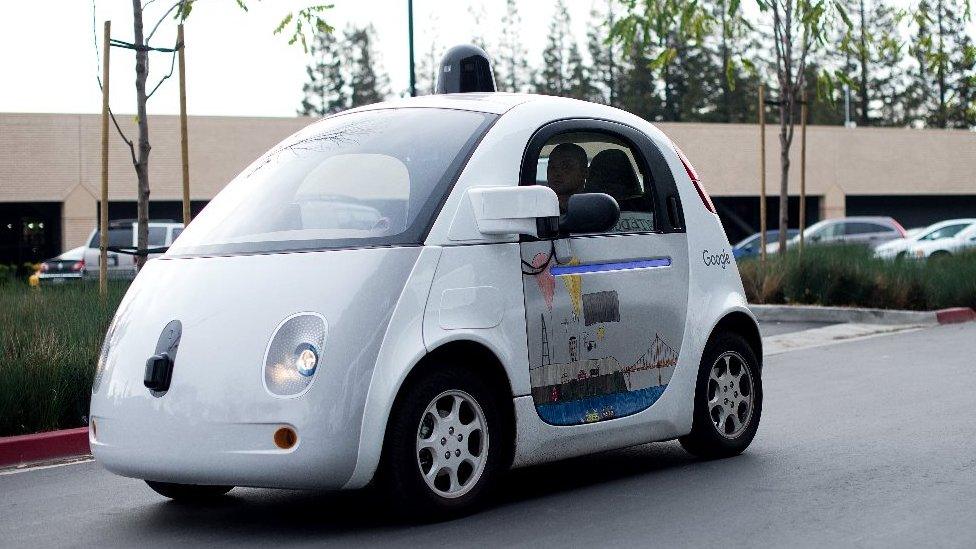
Google thinks self-driving cars should not have steering wheels or pedals
Google's self-driving car chief has urged lawmakers to ensure the US sets consistent laws for the technology.
Chris Urmson told a Senate hearing that the US Transport Secretary should be given authority over the matter rather than leaving it to individual states.
He also reiterated his company's view that it would be safer if passengers were not able to override a vehicle's autonomous systems.
That contrasts with the view of California's regulator.
The state's Department of Motor Vehicles published draft rules in December that said a trained human must still be able to take control.
Mr Urmson noted that 23 states had now set a total of 53 pieces of legislation relating to self-driving vehicles, some of which are at odds with each other.
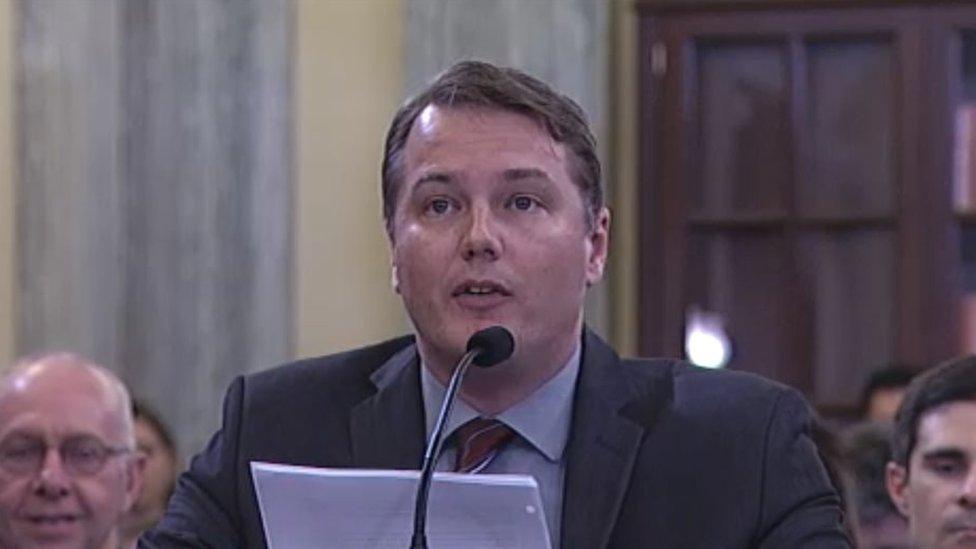
Mr Urmson wants the US transport secretary to take charge of self-driving laws
"We currently face a growing patchwork of state laws and regulations on self-driving cars that has the potential to become unworkable," Mr Urmson said.
"If every state is left to go its own way, it would be extremely impractical to operate an autonomous vehicle across state boundaries."
His view was supported at the Senate Commerce Committee by the pick-up service Lyft, which has partnered with General Motors to develop their own driverless cars.
"The worst possible scenario for the growth of autonomous vehicles is an inconsistent and conflicting patchwork of local, municipal and county laws that will hamper efforts to bring autonomous vehicle technology to market," said Joseph Okpaku, Lyft's director of public policy.
"Regulations are necessary, but regulatory restraint and consistency is equally as important if we are going to allow this industry to reach its full potential."
Leadership
The risks posed by self-driving cars in their existing state were highlighted last month when one of Google's cars caused a collision with a bus in Santa Clara, California, external.
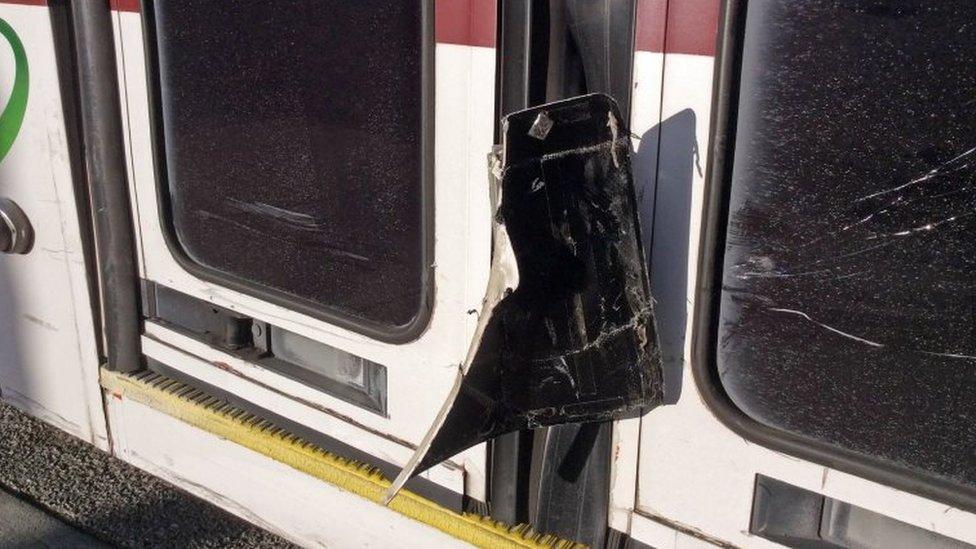
Part of Google's car was left stuck in the bus with which it collided
One robotics expert at the hearing urged the senators to resist pressure to permit the public to use self-driving cars too soon, and said the National Highway Traffic Safety Administration (NHTSA) should take greater leadership over tests in the meantime.
Prof Missy Cummings from Duke University added that she thought that the "self-driving car community" had been "deficient" in the way it had carried out its experiments to date.
"I perceive [there] to be a rush to field systems that are not ready for widespread deployment," she explained.
"[One issue] is operation in bad weather, including standing water on roadways, drizzling rain, sudden downpours and snow.
"Coupling these limitations with the inability of self-driving cars to follow a traffic policeman's gestures - especially on a rainy day in a poncho - means self-driving cars should not really be operating near elementary schools at this time.
"Another major problem with self-driving cars is their vulnerability to malevolent or even prankster intent. For example, it is relatively easy to spoof the GPS of self-driving vehicles, which involves hacking into their systems and driving them off course.
"Additionally, recent research has shown that a $60 [£42] laser device can trick self-driving cars into sensing objects that are not there."
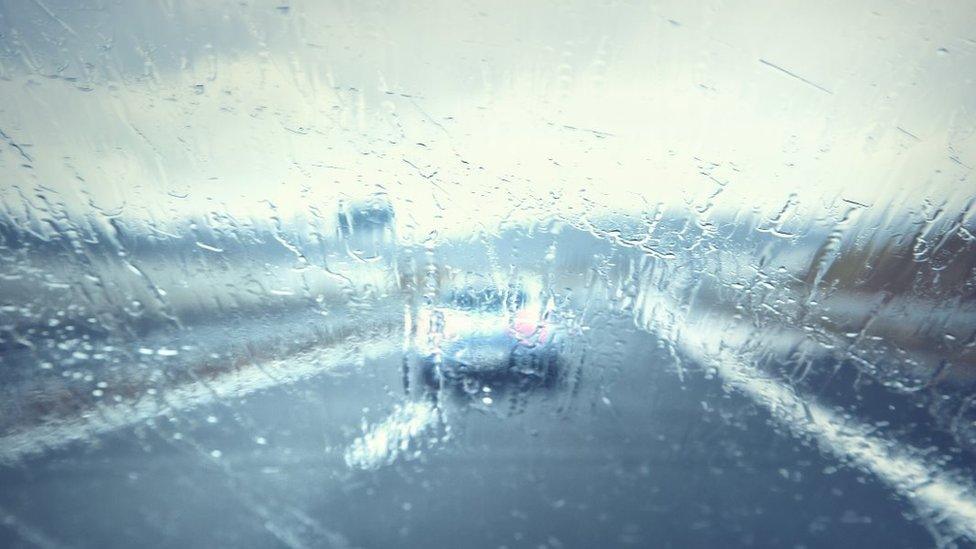
Prof Cummings has concerns about self-driving cars performance in bad weather
Transparency
Prof Cummings also took aim at Mr Urmson's statement that Google's self-driving cars had now travelled 1.4 million miles (2.25 million km) on the roads, noting that New York's taxi cab fleet went further in little over a day.
She suggested that 275 million miles must be driven fatality-free before self-driving cars could be said to be safer than human-controlled vehicles. In the meantime, Prof Cummings said companies needed to be more transparent about the tests they carried out.
One of the tech firms responded by highlighting that self-driving vehicles employed multiple sensors at the same time.
"Each of those technologies has strengths and weaknesses," explained Delphi's Glen Devos.
"In some cases vision or Lidar [a laser-based system] may be compromised by weather, but radar is very strong in weather.
"It's absolutely true that sensors have strengths and weaknesses, but by combining those sensors you end up with a much more capable package, certainly with greater perception capability than an individual [human] driver relying on vision alone."
Leap-frog risk
One of the senators raised the prospect that the US could fall behind other countries if it did not heed Google's warning and come up with a single set of rules.
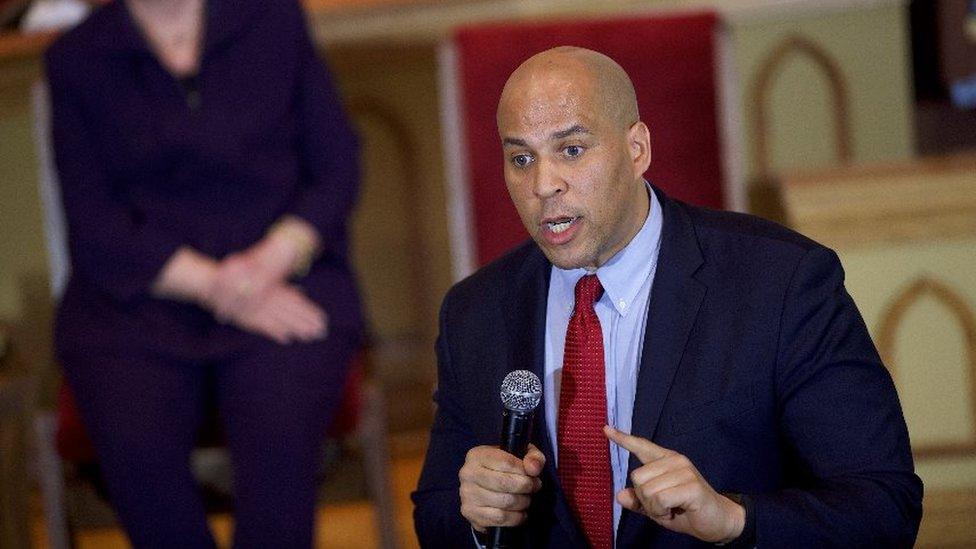
Senator Cory Booker is concerned that the UK will leapfrog the US with self-driving tech
"We were the first to introduce legislation permitting the testing of autonomous vehicles, but other countries are now clearly leapfrogging over us by offering more flexibility to companies to test this technology," said Senator Cory Booker.
"The UK, for example, is rapidly moving forward... and Japan has allowed Nissan and Toyota to test their vehicles there since 2013.
He added: "If the [current regulatory regimes] were around at the time of the Wright brothers, we would have never got off the ground in exploring air travel."
The Chancellor of the exchequer George Osborne is expected to confirm on Wednesday an expansion of the UK's self-driving tests by allowing computer-controlled lorries to share a stretch of motorway with the public later this year.
- Published14 March 2016
- Published5 March 2016

- Published10 February 2016
- Published14 January 2016
- Published16 December 2015